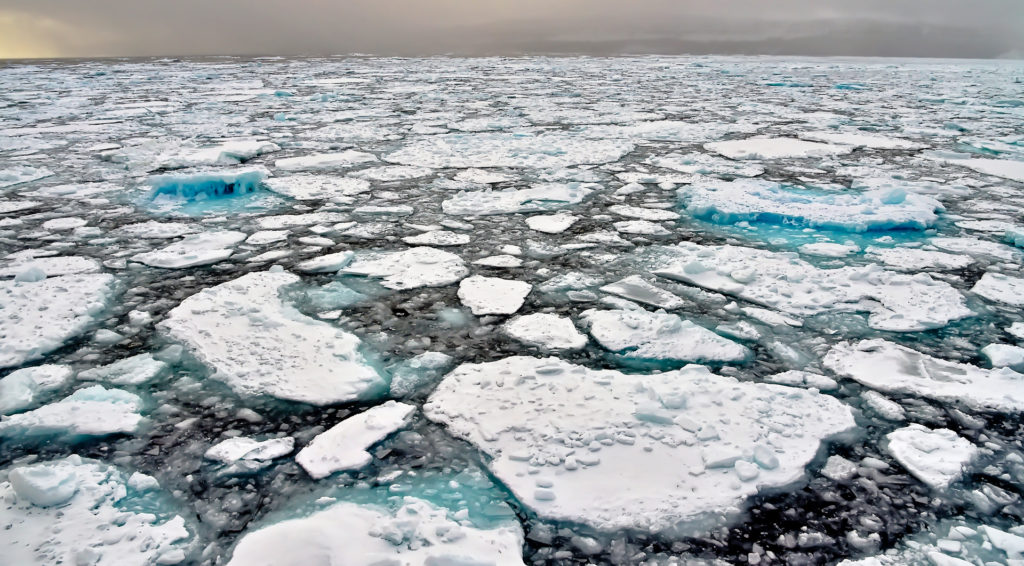The Arctic is a mesmerising region at the top of the world, quite literally, that incorporates parts of eight countries – Canada, Greenland, Iceland, Norway, Finland, Sweden, Russia and the United States. Because of its rich history, fascinating cultures and unique wildlife that cannot be found anywhere else in the world, it is a favourite for travellers seeking true adventure and authentic experiences. Discover 10 facts about the Arctic, which we have been helping passengers fall in love with for over 25 years.
Discover 10 Arctic facts

1
The Arctic Ocean is the smallest of the earth’s five major oceans, but it still covers 14 million square kilometres – that’s almost twice the size of Australia!
2
Polar bears, the largest land predators on Earth, are only found in the Arctic. They are classified as hyper carnivores because their diet is more than 70% meat. Polar bear cubs are generally born in dens in the depths of winter. They are a tiny 30-35 centimetres or 12-14 inches long and weigh little more than half a kilogram or one pound. By comparison, the largest polar bear ever recorded was a male that stood almost 3.5 metres or 12 feet high and weighed in at over 1,000 kg or 2,000 pounds! One of our least favourite Arctic facts is that polar bears are vulnerable to extinction, because of rising temperatures causing Arctic sea ice to melt.

3
While 84% of Greenland is an icy wonderland covered by the second largest ice cap on earth, in summer the lower valleys spring colourfully to life. There are over 500 delightful flowering plant, fern and grass species to be found in Greenland, including its national flower, Niviarsiaq, commonly known as broad-leaf fireweed. Find out more by watching our educational information session.
4
In Longyearbyen, the capital of the Norwegian archipelago of Svalbard, it’s not uncommon to meet wild reindeer as you walk its streets because they are so accustomed to human company. However, there is no need to worry if this happens to you on your Arctic expedition as they are generally considered quite gentle.


5
When the sun rises over the Arctic circle in June it doesn’t set for 30 whole days. Witnessing the sun glowing above the horizon at midnight is an unforgettable experience. As you travel further north the long summer day gets longer and longer until you arrive at the North Pole, where the sun doesn’t dip below the horizon for 187 days! Find out more about Arctic seasons.
6
Iceland, known as the land of fire and ice, is a literal hotspot of volcanic and geothermal activity. In fact, over the past two centuries, 30 post-glacial volcanoes have erupted. In addition, natural hot water supplies most of the population with economical, sustainable heating.


7
There are approximately 4 million inhabitants of the Arctic, and it’s estimated that on average 10% of these are indigenous. In Greenland however, approximately 89% of the population belongs to one of Greenland’s three indigenous Inuit ethnic groups: the Kalaallit, Tunumiit and Inughuit.
8
The scientific name for walrus, Odobenus rosmarus, means “tooth walking sea horse”. Walruses are very social animals, with a rigid hierarchy based on tusk length, body size and displays of aggression. In the world of the walrus, power can be fleeting. A walrus that breaks a tooth on the battleground can quickly lose its social standing!


9
The Arctic is home to scores of seabirds, but not penguins. If you have your heart set on seeing a parade of penguins you need to travel south, to places like Antarctica and the Subantarctic Islands.
10
Many keen kayakers know the Arctic as the origin of modern kayaking. Greenland’s skin-on-frame kayaks (qajaks) date back to the 16th century. You can connect with this long tradition by sea kayaking in the Arctic with one of our expert guides, paddling amongst postcard-perfect glaciers and icebergs.





